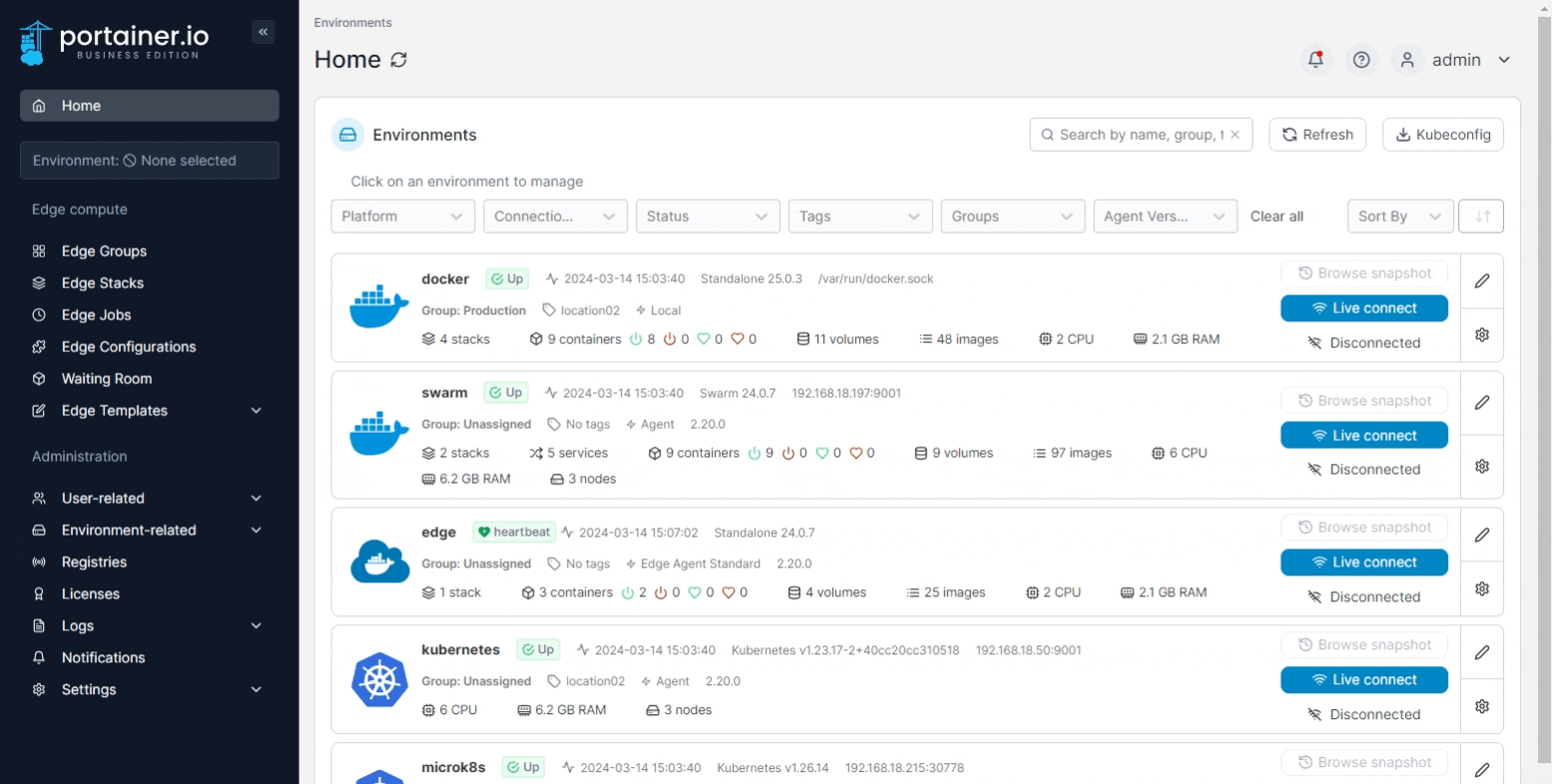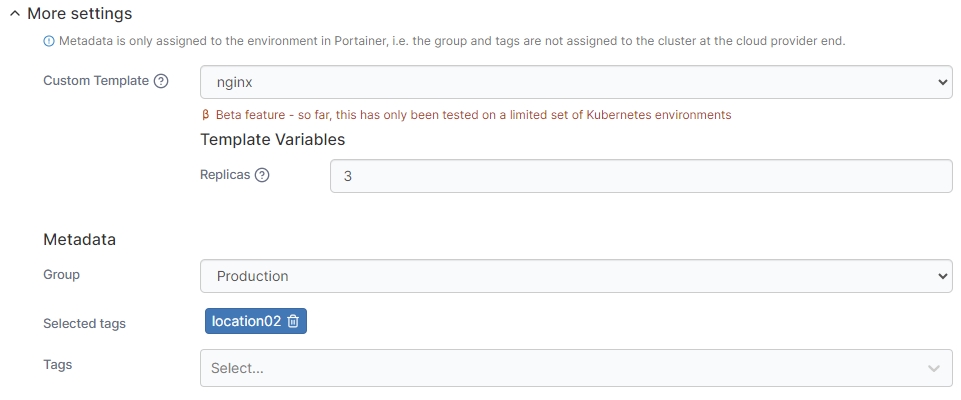Import an existing Kubernetes environment
With Portainer you can import your existing Kubernetes environment through the use of a kubeconfig file. Portainer will use the information in the kubeconfig file to connect to your environment then deploy and configure the Portainer Agent for you.
Requirements
While we have tried to support as many configurations as possible, there are a few requirements in order to fully support the import process:
Your cluster must have a load balancer configured and enabled.
Your kubeconfig file must specify
current-context.Your kubeconfig file must be self-contained (i.e., consist of only the one file with no external references).
Your kubeconfig file must provide cluster admin level credentials, in order for Portainer to deploy the agent on your cluster.
Generating a kubeconfig file for import
Depending on your environment, there may be different methods for creating a supported kubeconfig file. The following environment types are currently supported:
On-premise clusters
For an on-premise cluster, you can use the following kubectl command to generate a supported kubeconfig file:
kubectl config view --flatten=true --minify=true > kubeconfig.ymlCivo
To create a kubeconfig file from a Civo cluster, log into the Civo dashboard and go to Kubernetes. Select the cluster to import and click on Click to Download next to the Kubeconfig label.
Akamai Connected Cloud
To create a kubeconfig file from an Akamai Connected Cloud LKE cluster, log into the Akamai dashboard and click on Kubernetes in the left hand menu. Select the cluster to import, and in the top right of the page select Actions then Download Config.
DigitalOcean
To create a kubeconfig file from a DigitalOcean cluster, log into the DigitalOcean dashboard and in the left hand menu select Manage then Kubernetes. Alternatively, go to Projects, select the project containing your cluster, then look in the Clusters panel. Select the cluster to import, then click the Kubeconfig option to download the kubeconfig file.
Microsoft Azure
To create a kubeconfig file from an Azure cluster, download and install the Azure CLI from Microsoft. Start a shell session on Linux or an administrator PowerShell session on Windows, and run the following:
az loginThis command can take a couple of minutes to complete the first time it is used, and involves a browser window opening in order to authenticate you with Azure.
Once this completes and you are authenticated, run the following command:
az aks get-credentials --resource-group [resource-group-name] --name [cluster-name] --file ./kubeconfig-azure.ymlReplace [resource-group-name] with the resource group containing your cluster. Replace [cluster-name] with your cluster.
Importing your kubeconfig
Once you have your kubeconfig file created, from the menu expand Environment-related, click Environments, then click Add environment.

Select the Kubernetes option and click Start Wizard. Then select the Import option.
Enter a name for cluster then click Select a file to browse for your kubeconfig file.

As an optional step you can expand the More settings section to customize the deployment further.
Custom Template
Select a custom template to deploy on your cluster. This is handy for pre-loading a new environment with your applications. The template will be deployed in the default namespace unless the template specifies a namespace to use. You can also set any variables the template requires.
Group
Select a group to add the new environment to once provisioning completes.
Tags
Select any tags to add to the environment.

When you're ready, click the Connect button. If you have other environments to configure click Next to proceed, otherwise click Close to return to the list of environments where you will see the progress of your provision.
Last updated
Was this helpful?